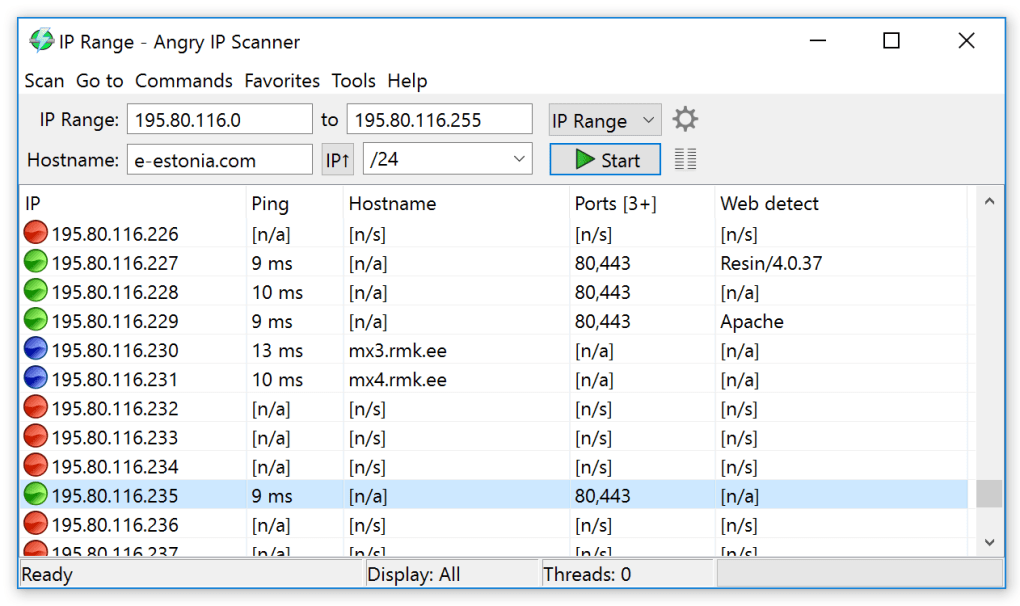

Inverse TCP Flag Scan: Here, the attacker sends TCP probe packets with a TCP flag (FIN, URG PSH) or no flags.Depending on the response of the scan, the port is determined, whether open or closed. IDLEScan: An IDLE scan uses a spoofed/hoax IP to send the SYN packet to the target by determining the port scan response and IP header sequence number.FIN scan receives the same response and has the same limitations as XMAS scans.

FINScan: A FIN scan is similar to an XMAS scan except that it sends a packet with just the FIN (finish) flag and no URG or PSH flags.If there is an open port, there will be no response but the target responds with an RST/ACK packet if the port is closed. XMASScan: XMAS scan send a packet which contains URG (urgent), FIN (finish) and PSH (push) flags.If an RST is retrieved from the target, it is assumed that the port is closed or not activated. SYN stealth scan is advantageous because a few IDS systems log this as an attack or connection attempt. A hacker sends an SYN packet to the victim, and if an SYN/ACK frame is received back, then the target would complete the connection, and the port is in a position to listen.

SYNScan: SYN scan or stealth doesn't complete the TCP three-way handshake technique.ACK denotes acknowledgment, which is used to establish a connection between two hosts. Here SYN denotes synchronization, which is used to initialize connections between the client and the server in packets. The client again responds to the server by sending an ack packet. Here first, the client sends a synchronization packet for establishing a connection, and the server listens to and responds with a syn/ack packet to the client. Here, TCP (Transmission Control Protocol) and IP (Internet Protocol) are the two protocols used for handshaking between a client and a server. In computer terms, handshaking means the automated process used to set dynamic parameters of a communication channel between two entities using some protocols. TCP/IP Handshakeīefore moving to the scanning techniques, we have to understand the 3-way TCP/IP handshaking process. Once the Hacker fetches the victim organization's IP address by scanning TCP and UDP ports, the Hacker maps this organization's network under his/her grab. During this scan, hackers need to find out those live hosts, firewalls installed, operating systems used, different devices attached to the system, and the targeted organization's topology. It is a conventional technique used by penetration testers and hackers to search for open doors from which hackers can access any organization's system. This information may be used by intruders/hackers to portray the lists of applicable exploits. Telnet and ID Serve are the tools used mainly to perform a Banner-grabbing attack. Banner Grabbing: is the method for obtaining information regarding the targeted system on a network and services running on its open ports.Scanning beyond IDS (Intrusion Detection System).Check for open ports (The technique is called Port Scanning, which will be discussed below).Hackers and Pen-testers check for Live systems.To discover and deal with vulnerabilities in Live hosts.To discover the Operating System and system architecture of the target.To discover services that are running on a host computer.To discover live hosts/computer, IP address, and open ports of the victim.Vulnerability Scanning Objectives of Network Scanning.So a pen-tester and ethical hacker list down all such vulnerabilities found in an organization's network. This technique led hackers to identify vulnerabilities such as missing patches, unnecessary services, weak authentication, or weak encryption algorithms. Vulnerability scanning is performed by pen-testers to detect the possibility of network security attacks. Network scanning is one of the components of intelligence gathering and information retrieving mechanism an attacker used to create an overview scenario of the target organization (target organization: means the group of people or organization which falls in the prey of the Hacker).

Scanning is another essential step, which is necessary, and it refers to the package of techniques and procedures used to identify hosts, ports, and various services within a network. Report this ad report this ad What is Scanning Techniques? Ethical Hacking Tutorial What is Hacking? Information Gathering Techniques Footprinting Scanning Techniques Social Engineering Physical Security System Hacking Phishing Computer Virus Rootkit Botnet DoS Attacks and Its Prevention Darknet


 0 kommentar(er)
0 kommentar(er)
